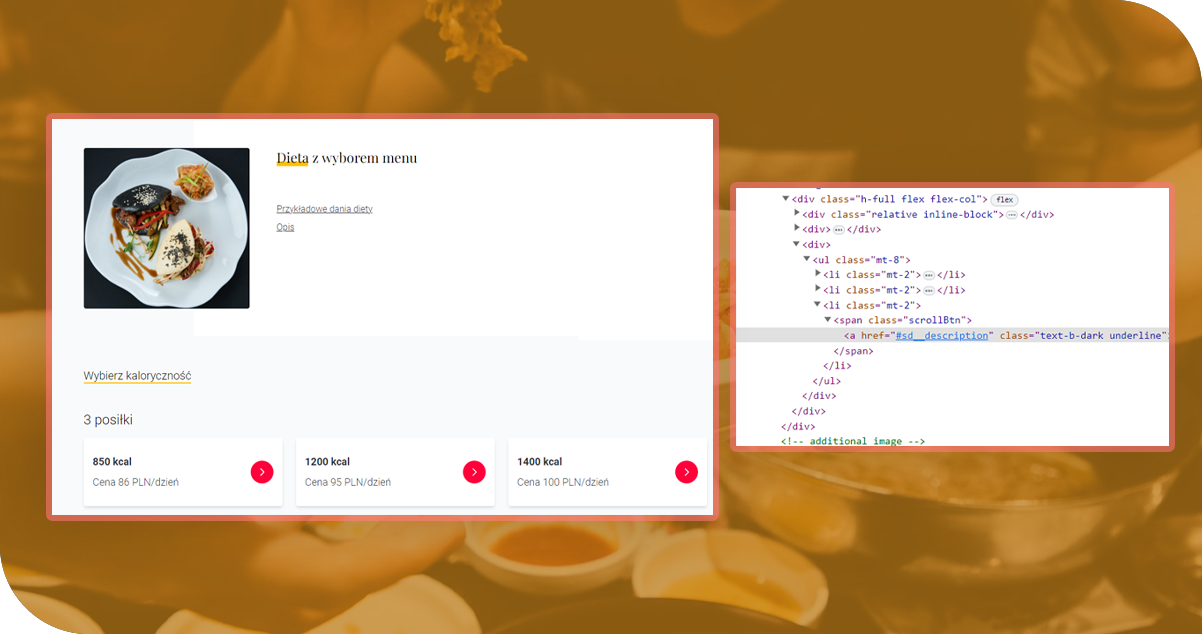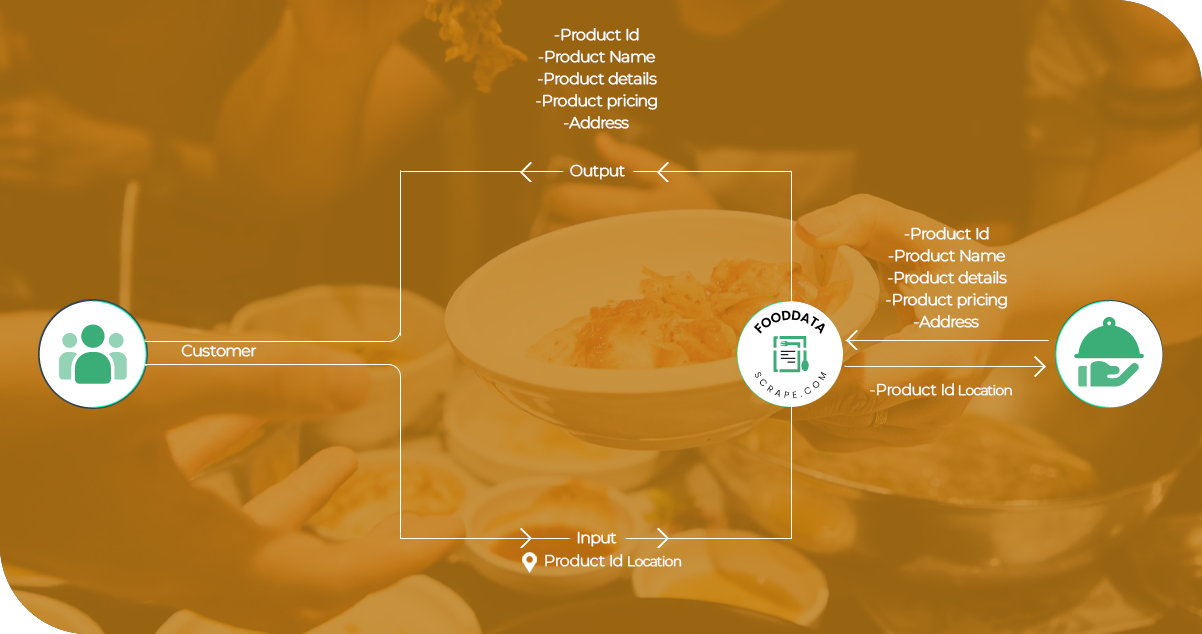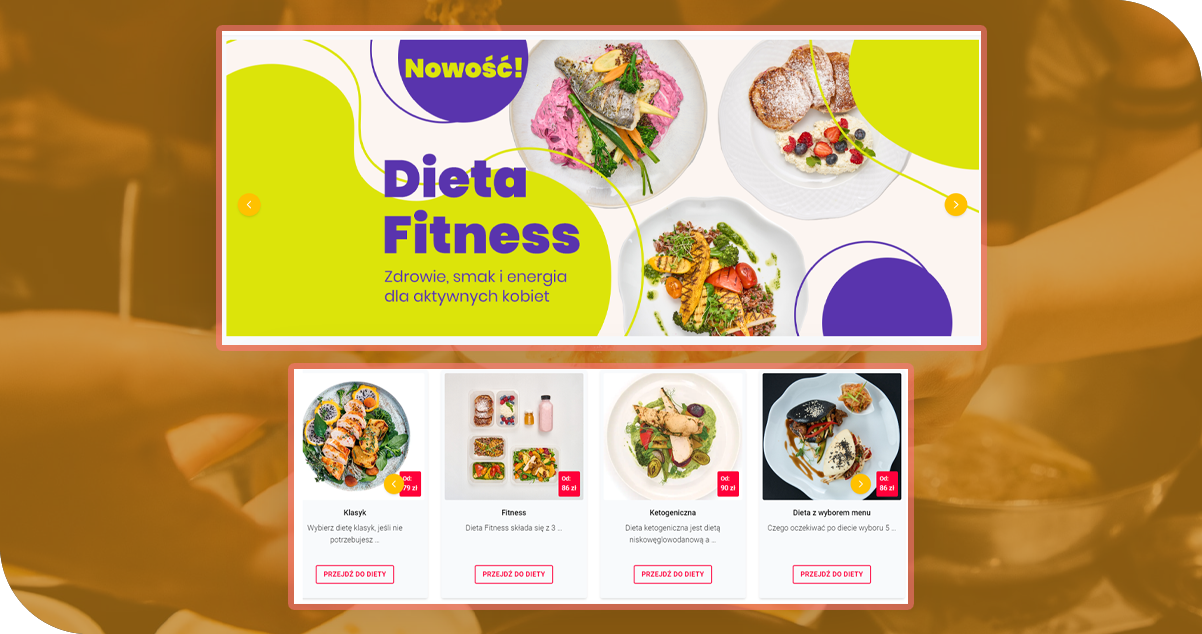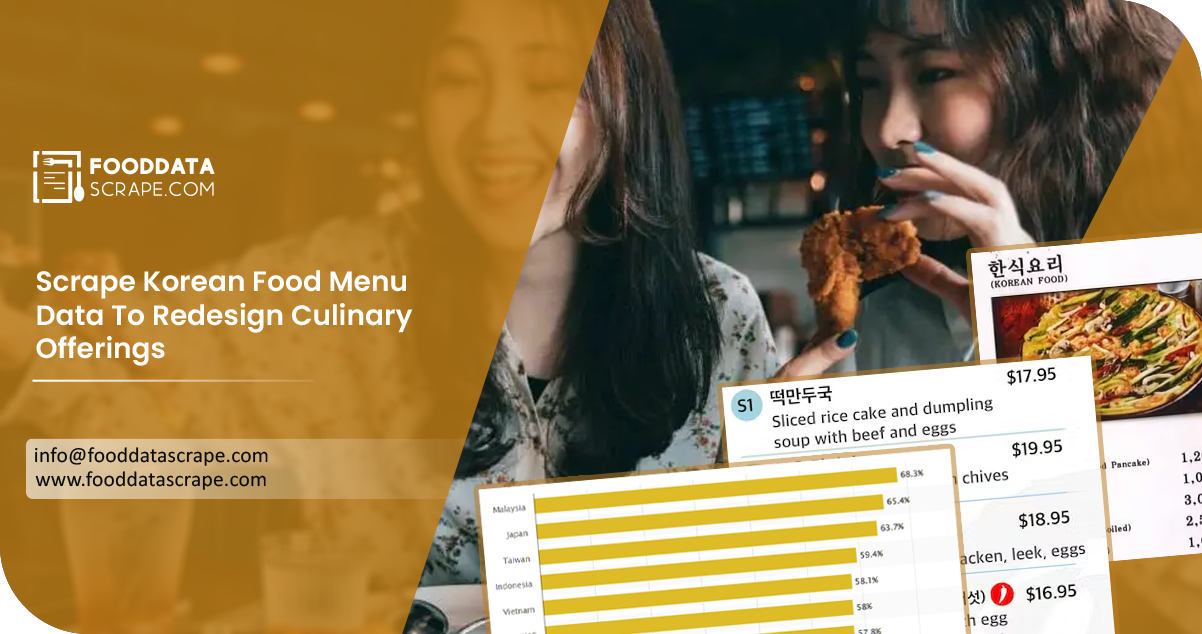The Client
Our client owned a luxurious restaurant and desired to redesign their menu. Hence, they wanted to scrape Korean menu data to revamp their culinary offerings and create an even more enticing dining experience for their patrons. By harnessing the power of data, our client aimed to explore the latest trends in Korean cuisine, discover hidden gems among traditional dishes, and ensure that their menu resonated with the evolving preferences of their discerning customers.
Key Challenges

Language Barriers: Korean menus are in Hangul, the Korean script, which can be challenging for web scraping tools to parse accurately. Overcoming language barriers and ensuring correct translation and interpretation of menu items and descriptions took a lot of work.
Cultural Sensitivity: Korean cuisine is deeply rooted in tradition and culture, and menu items may carry cultural nuances or regional variations that require careful handling. Ensuring the cultural sensitivity and accuracy of the scraped data was crucial to maintaining authenticity.
Image-Based Menus: Some Korean restaurants rely on image-based menus rather than text, making it challenging to extract structured data. Implementing optical character recognition (OCR) technology to convert images into text data added complexity to the scraping process.
Menu Changes and Specials: Korean restaurants frequently update their menus with seasonal or limited-time specials. Hence, tracking these changes in real time and accurately reflecting them in the scraped data required ongoing monitoring and adjustments to the scraping algorithms.
Key Solutions
Multilingual Scraping Tools: Our food delivery data scraping services employ multilingual scraping tools capable of handling Hangul characters and addressing language barriers. These tools helped extract Korean menu items and descriptions accurately, ensuring the data's linguistic integrity.
Cultural Expertise: We enlisted the expertise of Korean culture and cuisine specialists to review and validate the scraped data. It ensured the representation of menu items' cultural nuances and regional variations, preserving authenticity.
OCR Integration: We integrated Optical Character Recognition (OCR) technology for image-based menus to convert menu images into machine-readable text. It allowed us to include a broader range of restaurants in our data collection efforts.
Real-Time Monitoring: To keep up with menu changes and specials, we implemented real-time monitoring of restaurant websites. It involved automated checks for updates and immediate data retrieval on detecting changes, ensuring our database remained current.
Data Quality Assurance: We implemented data quality assurance protocols to detect and rectify inaccuracies. It included manual verification processes and data cleansing techniques to maintain the highest level of data accuracy.
Scalability and Efficiency: To handle the volume and scalability of data, we optimized our scraping infrastructure for efficiency. It involved using distributed computing techniques and load balancing to ensure our scraping operation could expand to cover many restaurants without compromising performance.
Methodologies Used

- Web Crawling: We employed crawling techniques to navigate restaurant websites systematically. It allowed us to access menu pages, extract HTML data, and identify menu items and descriptions.
- HTML Parsing: We utilized HTML parsing libraries and tools to extract structured data from the HTML code of restaurant websites. It enabled us to isolate critical menu information such as dish names, ingredients, prices, and descriptions.
- Regular Expressions: To address variations in data formatting, we applied regular expressions to identify and extract specific data patterns. It was beneficial when dealing with inconsistent menu layouts and language characters.
- API Integration: In cases where restaurant websites offered APIs (Application Programming Interfaces), we integrated these food scraping APIs directly into our process. This streamlined data retrieval and ensured real-time access to menu updates where available.
- Optical Character Recognition (OCR): We implemented OCR technology for image-based menus to convert text embedded in menu images into machine-readable data. It allowed us to include a broader range of restaurants in our data collection efforts.
- Data Validation and Cleaning: We incorporated data validation and cleaning procedures to enhance the data quality of restaurant menu data scraping. It involved automated and manual checks to eliminate duplicates, correct inaccuracies, and ensure consistency in the scraped menu data.
Advantages of Collecting Data Using Food Data Scrape

Expertise and Experience: Food Data Scrape specializes in web scraping and data extraction, bringing a wealth of experience and expertise. They have the technical knowledge to navigate complex websites, handle data intricacies, and overcome scraping challenges efficiently.
Data Accuracy and Quality: The company prioritizes data accuracy and quality assurance. They employ rigorous validation processes, data cleansing techniques, and error checks to ensure the scraped data is reliable and free from inconsistencies.
Scalability: The company can scale its operations to handle large volumes of data. Whether you need data from a few restaurants or a comprehensive nationwide database, they have the infrastructure and resources to meet your requirements.
Timeliness: Timely data collection and updates are crucial in the food industry, where menus change frequently. This company can set up automated systems for real-time monitoring and data refresh, ensuring you always have access to the latest information.
Legal Compliance: We are well-versed in navigating legal and ethical considerations. We adhere to website terms of service, respect data privacy regulations, and conduct scraping activities lawfully and ethically, reducing legal risks for our clients.
Customization and Integration: We can tailor our scraping solutions to your needs. We can integrate scraped data into your existing systems, databases, or applications, providing seamless access to the information you require for your business operations.
Final Outcome: We were successfully able to scrape data from Korean menus. Our client leveraged this comprehensive dataset to make informed decisions and enhance business operations. They used the data for various purposes, including menu redesigning, pricing adjustments, and staying updated on the latest culinary trends. By having access to detailed menu information from a wide variety of Korean restaurants, our client was able to improve their offerings, cater to customer preferences more effectively, and maintain a competitive edge in the restaurant industry.
























































































